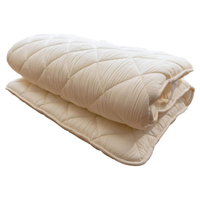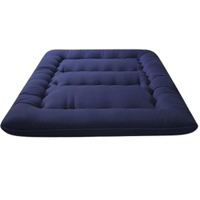What are Japanese floor mattresses and are they healthy to sleep on?
Traditional Japanese futons are great for small spaces and budgets, but are they the right type of mattress for you?
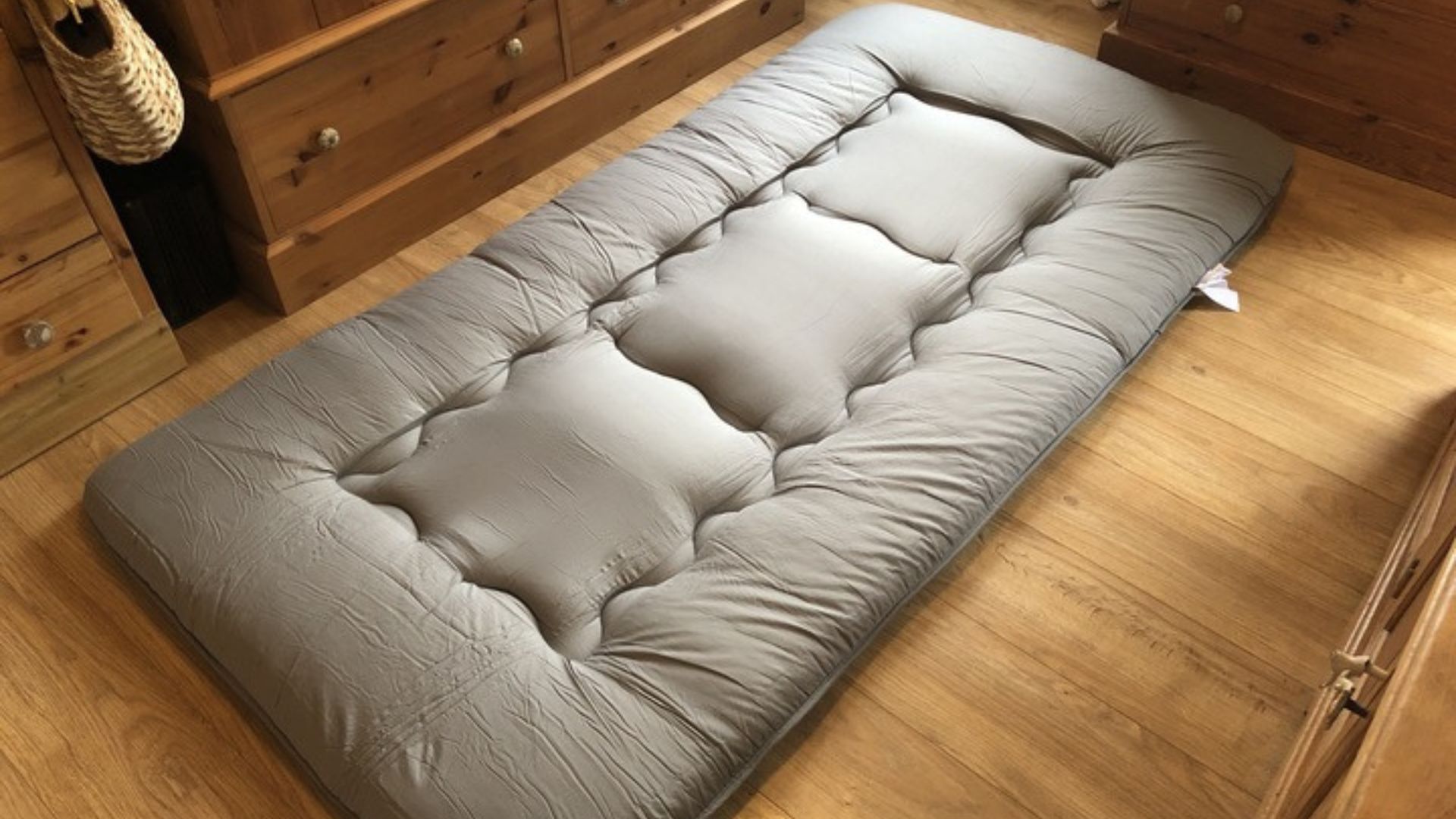
As a sleep writer, I know how important the right mattress is for a good night’s sleep – but can even the best mattresses provide all the proper support, comfort, and relief you need at night, even without a bed base? Maybe, but there's a more convenient option for sleeping on the floor.
I’m talking about traditional Japanese floor mattresses. These practical beds have been a staple in Japan for centuries, and their foldable design means they're great for guests, small homes, and moving days.
But are Japanese floor mattresses right for you? Here, I’ll discuss what these space-saving mattresses are, who they’re for, and why you should (and shouldn’t) get your hands on one.
What is a Japanese floor mattress?
A Japanese floor mattress (or shikibuton) is a rectangular, quilted pad resembling a slim memory foam mattress. It has a thin, foldable design that's easy to set up and put away when you're not sleeping. In Japan, it's typically laid out onto a type of straw mat called tatami to add some comfort and absorb moisture to keep the floor mattress dry.
This type of bed is often used by overnight guests or those who’ve just moved into an unfurnished space. It's also an economical alternative to a traditional Western-style mattress.
Is it the same as a Japanese futon?
Yes, Japanese futon mattresses are often called Japanese floor mattresses to distinguish them from Western-style futons, (or simply “futons” in the US). Despite that, the standard definition of a futon reflects the Japanese-style futon. Its Westernized counterpart is several inches thicker, less compact, and bears more resemblance to a sofa bed.
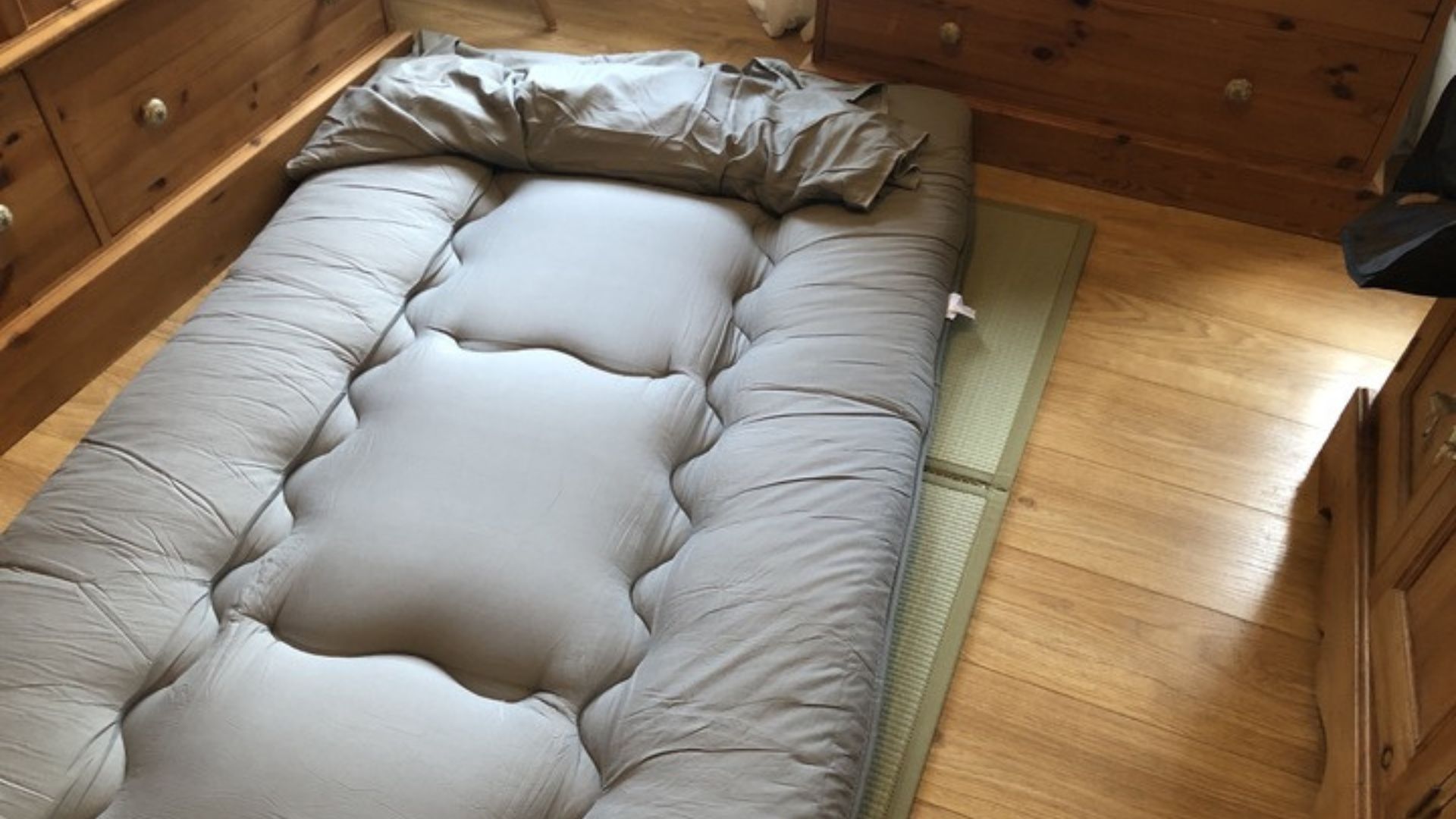
Are Japanese floor mattresses healthy to sleep on?
According to Healthline, Japanese floor mattresses tend to be firmer than traditional beds. Their naturally firm support promotes deep sleep through natural spine alignment, improved blood circulation and posture, and relief from muscle aches and stiffness.
Healthline also points out that authentic Japanese floor mattresses are often free from synthetic materials and flame retardants (such as potentially dangerous flame retardant fiberglass), and are made from non-toxic hypoallergenic materials.
Benefits of a Japanese floor mattress
✅ It's great for small spaces: With a thin, foldable design that doesn’t require a bed frame, a Japanese floor mattress is a space-saving sleep solution for smaller houses, studio apartments, and tiny bedrooms. Once you’re awake, simply roll it up, put it away, and enjoy the freed-up space during the daytime.
✅ It's easy to accommodate guests (or travel with your bed): The practical, compact design of a Japanese floor mattress allows you to host unexpected overnight guests – or relocate to a different house, apartment, or dorm room with your bed in tow.
✅ You need a firmer, cooler bed: The firmness of Japanese floor mattresses makes them a good choice for back and stomach sleepers who need sufficient support for their lumbar and hips. Meanwhile, the light, breathable materials and proximity to the floor will create a cooler surface, which could help hot sleepers.
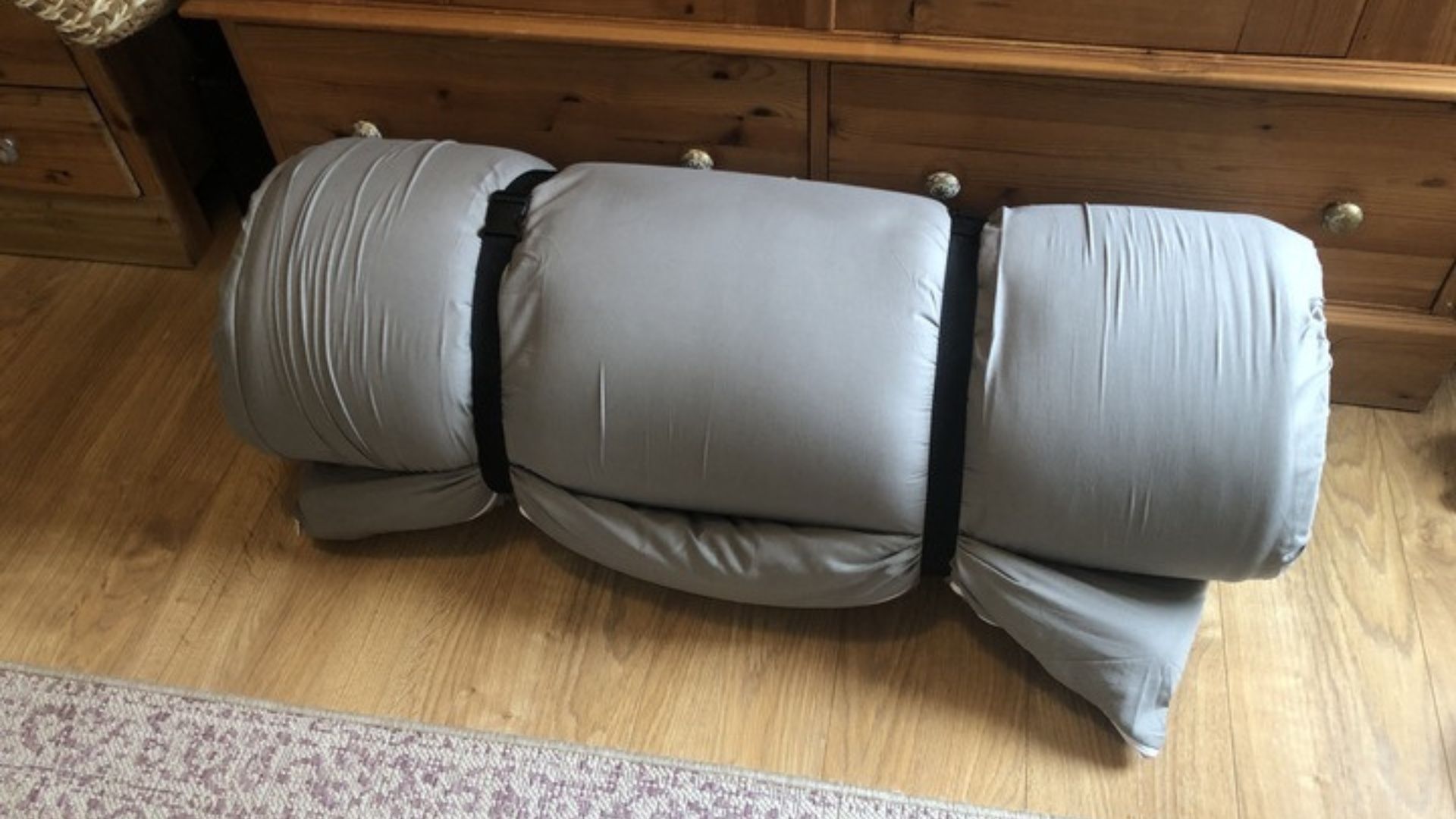
Drawbacks of a Japanese floor mattress
❌ You need to clean it often: While a Japanese floor mattress is much easier to clean than a traditional bed, you need to air it out regularly –preferably outdoors in direct sunlight to kill bacteria and prevent moisture buildup. This won't be easy if you don’t have a yard or you live in a wet climate.
❌ You need a place to store it: A Japanese-style futon is convenient for creating space in your living room, bedroom, or studio apartment as long as you have somewhere to put it. Plus, if you’re not fond of making your bed, putting away and setting up your futon can become a hassle.
❌ You need a plush mattress: Side sleepers and lighter bodies benefit from the soft, sink-in feeling of a plush bed, so you may find a futon too firm and uncomfortable.
Do you need a bed base with a Japanese floor mattress?
No, you don’t need a bed base for your Japanese floor mattress. You can put it directly on the floor and save money and space.
However, the Japanese futon’s portable design means they can be placed anywhere, including a bed frame. If you don't have a tatami, a low platform bed base will work, as will a base with slats for proper ventilation.

Should you put a mattress directly on the floor?
We don't recommend it. A mattress that's directly on the ground will be exposed to more dirt, which could lead to allergen buildup. Plus, the restricted air circulation will lead to moisture, creating an environment for mildew and mold. A traditional Japanese floor mattress is usually paired with a straw mat to add airflow and comfort to hard flooring.
Also, be careful with a floor mattress if you have mobility issues. Getting up and down onto the floor may create comfort or inaccessibility.
Where to buy Japanese floor mattresses
There are many places to buy a Japanese floor mattress online, with futons from top-rated futon brands being available on Amazon. Floor bedding brands FULI and MAXYOYO boast thousands of positive reviews on Amazon and are currently the most popular futon sellers on the site.
FULI Japanese Futon Mattress: from $205 $178 at Amazon
Made in Japan, this futon mattress from traditional Japanese-style bedding brand FULI is available in five sizes (from twin to queen) and has a medium firmness that's perfect for back sleepers. It’s also 100% breathable cotton, so hot sleepers and allergy sufferers should feel comfortable. However, it’s not machine washable and does occasionally require you to lightly beat the mattress to remove dust.
MAXYOYO Japanese Floor Mattress: from $95.99 at Amazon
A cheaper alternative to FULI’s mattresses, this high-density memory foam futon is available in five sizes including king and cot. It also comes with a microfiber cover to keep the futon free of dust and allergens. Like the FULI Futon Mattress, this futon is spot clean only and hot sleepers should be aware that memory foam does tend to trap heat. However, considering its price and firm rating, this mattress is ideal for those looking for a foldable bed for students, travellers, and guests. I recently tried this futon and wrote about my experience: I tried Amazon’s best-selling Japanese floor mattress — here’s what to know before buying.
Sign up to get the BEST of Tom's Guide direct to your inbox.
Get instant access to breaking news, the hottest reviews, great deals and helpful tips.

Frances Daniels is a PPA-accredited journalist and Sleep Staff Writer at Tom's Guide with an MA in Magazine Journalism from Cardiff University. Her role includes covering mattress and sleep news and writing sleep product reviews and buyer's guides, including our Best Hybrid Mattress 2025 guide. She is hugely interested in the relationship between good sleep and overall health, interviewing a wide array of mattress and sleep experts to create well-informed articles about important topics such as nutrition, sleep disorders (from sleep apnea to night terrors), lucid dreaming, sleep hygiene, and mattress care. She is also our specialist on mattress toppers — producing mattress topper reviews and taking care of our Best Mattress Toppers 2025 guide — and takes the lead on all content related to fiberglass-free mattresses for a clean, non-toxic sleep. Outside of Tom's Guide, she has written for Ideal Home, Homes & Gardens, and Marie Claire.
- Alison BarrettaFreelance reviewer and writer
You must confirm your public display name before commenting
Please logout and then login again, you will then be prompted to enter your display name.
